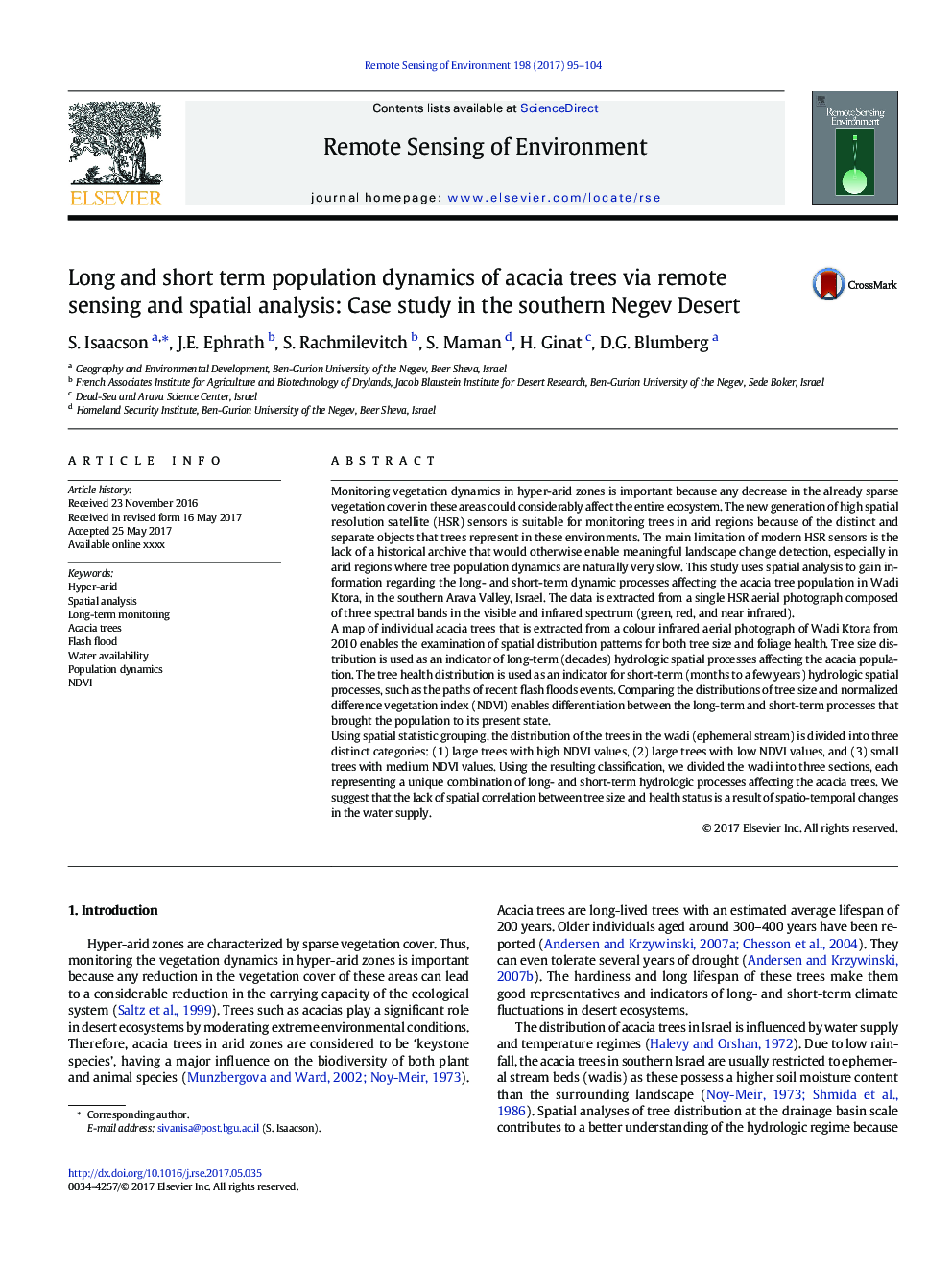| Article ID | Journal | Published Year | Pages | File Type |
|---|---|---|---|---|
| 5754920 | Remote Sensing of Environment | 2017 | 10 Pages |
Abstract
Using spatial statistic grouping, the distribution of the trees in the wadi (ephemeral stream) is divided into three distinct categories: (1) large trees with high NDVI values, (2) large trees with low NDVI values, and (3) small trees with medium NDVI values. Using the resulting classification, we divided the wadi into three sections, each representing a unique combination of long- and short-term hydrologic processes affecting the acacia trees. We suggest that the lack of spatial correlation between tree size and health status is a result of spatio-temporal changes in the water supply.
Keywords
Related Topics
Physical Sciences and Engineering
Earth and Planetary Sciences
Computers in Earth Sciences
Authors
S. Isaacson, J.E. Ephrath, S. Rachmilevitch, S. Maman, H. Ginat, D.G. Blumberg,
